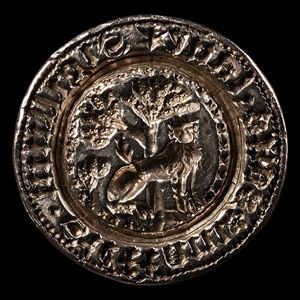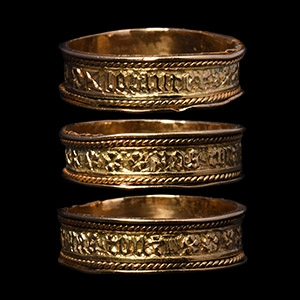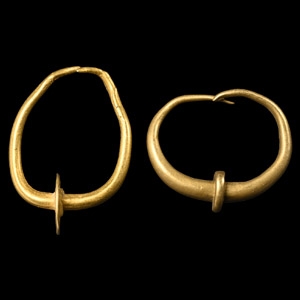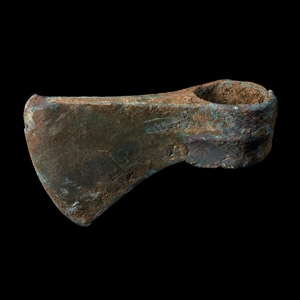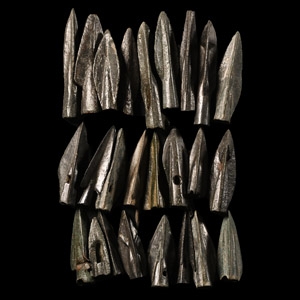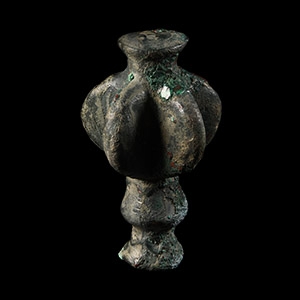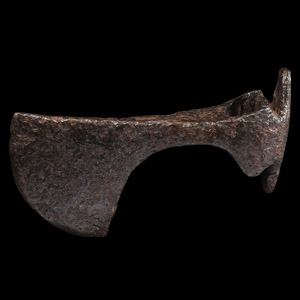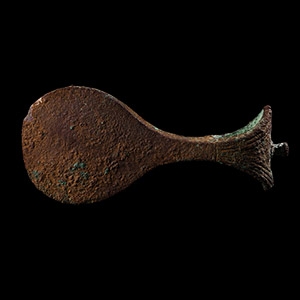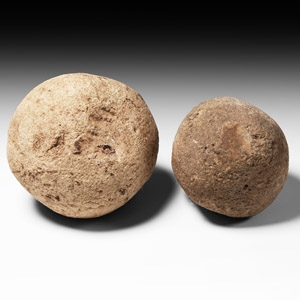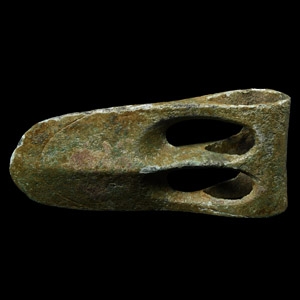Home > Auctions > 21 - 25 February 2023
Ancient Art, Antiquities, Natural History & Coins
Auction Highlights:
Acquired 1980-2015.
Ex Abelita family collection.
Private UK collection, 1980s-1990s.
Acquired from a UK gallery, circa 2000.
Cf. Gernez, G., L’armament en métal au Proche et Moyen-Orient: des origines a 1750 av. J.C., Paris, 2007, p.155 vol. I, subtype H.2K.C, for the type.
This axe belongs to a group mainly including those of rectangular shape, the blades themselves rectangular or with slightly divergent edges, with a straight or rounded edges.
Acquired before 2000.
From the collection of a European gentleman living in the UK.
Early 1990s London collection.
Acquired on the UK art market.
From a private collection, Lancashire, UK.
See Gorelik, M., Weapons of Ancient East, IV millennium BC-IV century BC, Saint Petersburg, 2003, pl.XXX, no.61, from Chankhudaro, Hindustan, Accadic territory.
Bronze maces with a long bronze tubular sleeve appeared in Mesopotamia from the last third of the 3rd millennium B.C., apparently being of Palestinian origin. This type of mace was then spread to Elam and from there to India.
Acquired 1971-1972.
From the collection of the vendor's father.
Property of a London, UK, collector.
Cf. Kirpichnikov, A.N., Drevnerusskoe Oruzie (Ancient Russian Weapons), II, Moscow-Leningrad, 1966, in Arkheologia SSSR, vol. E1-36, especially axe no.2, from (pl.XVIII) from Zauzhelie; Sedov, B.B., Finno-Ugri i Balti v Epokhi Srednevekovija, Moscow, 1987, plate V, item 23.
The axe seems to be a variation of type III of the Kirpichnikov classification of the Eastern Rus Axes typology - battle axes with downwards blade, two pairs of side wings and an elongated cut-out butt. Paulsen called the related type "Varangian group" of North Baltic axes.
Early 1990s London collection.
Acquired on the UK art market.
From a private collection, Lancashire, UK.
See Gernez, G., L’armament en métal au Proche et Moyen-Orient: des origines a 1750 av. J.C., Paris, 2007, fig.2.16, pls.86-88, for the type.
The axe belongs to subtype H2.J.b of the Gernez classification. These axes are characterised by decoration often executed with remarkable care and technical skill. The enlargement and indentation of the back of the collar varies, whilst the shape of the blade is, by contrast, standardised, with divergent rectilinear edges and a straight cutting edge or, more rarely, a rounded cutting edge, as in the example offered here.
Ex S. Motamed collection.
with Bellman's Auctions, 20th-26th June 2015, lot 2482.
Property of a London gentleman.
Cf. Khorasani, M.M., Arms and Armour from Iran. The Bronze Age to the End of the Qajar Period, Tübingen, 2006, item 7, for type.
Acquired before 2000.
From the collection of a European gentleman living in the UK.
Acquired 1971-1972.
From the collection of the vendor's father.
Property of a London, UK, collector.
See Glosek, M., Późnośredniowieczna broń obuchowa w zbiorach polskich (Late medieval blunt weapons in Polish collections), Warszawa-Łódź, 1996, pl.XXXI, lett.C.
The axe corresponds to the type XII of the Glosek classification. The type is known from Poland and Sweden. However, very often these axes were found without context, and generally classified as 15th century A.D. While the axes from Sweden are regarded as weapons, and dated 14th century A.D., the long and thickened back of the axe is rather characteristic of a butcher's axe, or of an executioner's axe.
Acquired on the UK antiques market between 1974-1985.
Albert Ward collection, Essex, UK.
See Capwell, Dr Tobias, Knives Daggers & Bayonets, 2009, p.179.
Acquired in the 1990s.
Ex Paris Gallery.
Cf. Gernez, G., L’armament en métal au Proche et Moyen-Orient: des origines a 1750 av. J.C., Paris, 2007, fig.2.42, type H4b.
This axe corresponds to the type H4B of the Gernez classification. Several of these models, with their moulds, are known from the Levant, like those in Byblos, Ras Shamra, and Tell Arqa. On the other hand, a workshop level II of the Kültepe karum delivered two moulds, showing a local production of arms intended either for export or for the inhabitants originating from Mesopotamia or the Levant. This sub-type of eye-axes is characteristic of the Middle Bronze Age 1 (2050-1750 B.C.).
Acquired in the 1990s.
From a North Yorkshire private collection, UK.
Cf. Fedorova, N.V., ‘Volga Bulgaria Silver of the 10th-14th centuries (on materials of the Trans-Urals collections)’ in Compareti, Raffetta, Scarcia, (ed.), Eran ud Aneran, Studies presented to B. Marshak on the Occasion of His 70th Birthday, Venezia, 2006, figs.10-11.
Decorated bow string protection plates were developed by Steppe people and widespread among the Volga-Bulgarian warriors, often decorated with niello. These protective plates were fastened with straps on the wrist to protect the lower arm from the blows of the bow tendons. In addition to the bone plaques used by the Khazars, precious silver specimens from the territory of the Volga Bulgars have been preserved, including finds from Zauralia and Western Siberia. A protective plaque decorated with mythological scenes also comes from Bilär (11th-12th century A.D.) Similar plaques with simpler decorations have been found in the region of Prikamye (10th-14th century A.D.).
721 - 732 of 2116 LOTS


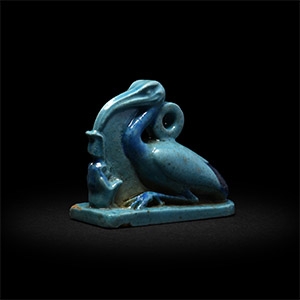



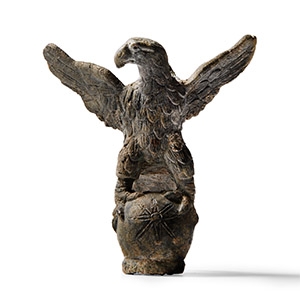
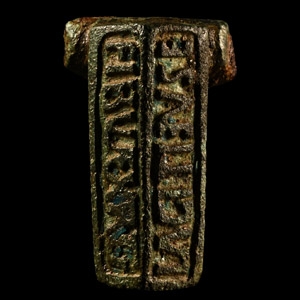

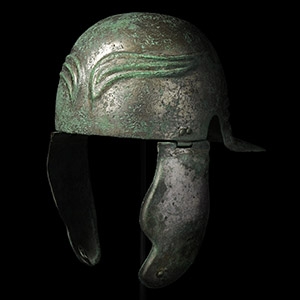
.jpg)
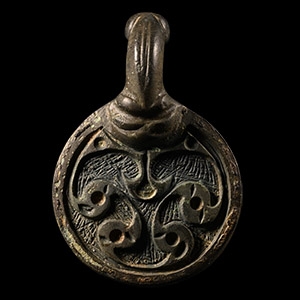
.jpg)
